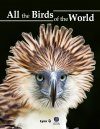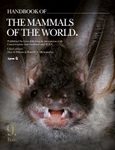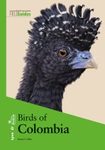A landmark, all the world’s birds in one book
By
Gehan de Silva Wijeyeratne
1 Nov 2020
Written for Hardback
Wow. All the Birds of the World in one book. How impossible this seemed when I first became a committed bird watcher as an early teen in the 1980s. During the period from 1992 to 2013, the 17 volume Handbook of the Birds of the World (HBW) was published by Lynx Edicions. After a 21-year publishing marathon, a single publisher had published illustrations and descriptive text of all the birds in the world. HBW was a publishing milestone and a zoological milestone. In 2014 and 2016, Lynx published the HBW and Birdlife International Illustrated Checklist of the Birds of the World, a superb two-volume reference with every bird illustrated and distribution maps and succinct text. A book I keep dipping into as I need to periodically update the photographic guides I have written on birds. It is no surprise that this has been followed up with a single volume All the Birds of the World (ABW).
This is in the same standard large format of 310 × 240 mm of the HBW and the Handbook of the Mammals of the World (HMW). All the Birds of the World is also a door stopper of a book with 967 pages and weighing 4.8 kg. It is yet another publishing and zoological milestone. The fact that the first print run sold out so quickly says it all. Which person interested in birds would not want this book? There is something wondrous about holding a book in one's hands and knowing that it has every single bird species in the world; 11,524 taxa, 20,865 illustrations and 11,558 distribution maps. For a book of its size and importance, it was priced attractively in its initial offer. All of this for Euro 65 is an outstanding offering.
When I first opened this book, I must admit I was a little taken aback. It was different from every other bird book by the almost complete absence of text accompanying the illustrations. It looked more like a simple pictorial catalogue of birds with a lot of red circles broken into quadrants. Well, the absence of text should not be a surprise, should you take the two HBW and Birdlife International Illustrated Checklists of Birds of the World (903 pages plus 1011 pages), and strip away the facing page of text, you will end up with a single volume of around 900 pages. But this book is much more than that. There are two key additions not found in the Illustrated Checklist, which compensate for the absence of text. Firstly, and not requiring much explanation is the introduction of QR codes which are linked to the online resources of the Cornell Lab of Ornithology. Hold a smartphone camera over it and hey presto you can read more text, view images and listen to calls. Magic. The second addition is an ingenious innovation; the taxonomic circle, that caters to serious birders who are preoccupied with taxonomy because that is their thing or because it matters for their life lists. For bird watchers, who are not into taxonomy, well, they can simply admire the beauty and diversity of birds with trogons, kingfishers and hummingbirds drawn by some of the world best bird illustrators.
The taxonomic circle introduced in the book is ingenious, a masterstroke of infographics that strips away large tranches of explanatory text and allows keen birders to read the information visually, easily and quickly. A circle is broken into four quadrants, each quadrant representing the status of a bird in each of the four major checklists of birds. These are the eBird Clements Checklist, IOC World Bird List, Howard and Moore checklist and the HBW and BirdLife International Checklist of the Birds of the World (HBW). The HBW checklist is assigned to the upper left quadrant. There are four levels of status coded in colour. Namely, Species (red), Subspecies Group (orange) Subspecies (pink) and not an accepted form (white). In each family, when an issue of lumping and splitting treatment arises in a difference between the different checklists, these are indicated in the circle quadrants by letters. A, B and C (and so on) are respectively the first, second and third species within a family where there is a taxonomic disagreement between the four checklists. Letters are used rather than numbers as letters allow the use of upper case and lower case for the system to work.
Consider an example. For White’s Thrush Zoothera aurea, all four quadrants are red which signify all four checklists are in agreement that White’s Thrush is a good species. However, the HBW quadrant contains an uppercase C (i.e. the third bird in the family of Thrushes Turdidae where all four checklists are not in agreement). This implies that there is another bird which HBW treats as a subspecies of White’s (White’s being the mother species). Scanning the images we see Sri Lanka Thrush Zoothera imbricata has a lowercase ‘c’ in the HBW quadrant. Thus, HBW treats Sri Lanka Thrush as a subspecies of White’s. But we also see the Howard and Moore quadrant has a lower case ‘d’ for the Sri Lanka Thrush. Looking across the images we see that Scaly Thrush Zoothera dauma has an upper case D in the Howard and Moore quadrant signifying this checklist treats Scaly Thrush as the mother species of Sri Lanka Thrush. Thus, a somewhat complicated taxonomic tangle involving three birds and different species-subspecies treatments across the four checklists is explained simply and visually using coloured quadrants and letters. It is easy to pick up when you have the book in front of you. Clever huh.
The front and outside back covers have a visual index of bird families, with passerines in the front and non-passerines in the rear. The appendices contain species extinct since AD 1,500, a list of standard country codes used in the distribution maps, a generous 34 pages of colour maps showing political boundaries and country codes and a list of one-country endemics which will help world listers to plan their trips. The top five are Indonesia (557 species), Australia (369 species), Brazil (275 species), Philippines (270 species) and Peru (134 species).
The front sections explain how the book works and the four major world checklists. A page is devoted to each of the phylogenetic trees of the non-passerines and passerines. I would have liked these to have occupied a double-page spread each, to make the images and text easier to view and read. There is a lot of fascinating evolutionary information embedded in these.
ABW is edited by Josep del Hoyo and in the preface, he explains the story behind this book as a triple project which began with a 15 country Land Rover drive across Africa which led to the HBW and the Illustrated Checklists of the Birds of the World and the ABW. The inside jacket flap carries a mini author bio. In this book, he emerges from the shadows, with overt recognition of his pivotal role in transforming natural history publishing by building out the Lynx Edicions team.
104 of 115 found this helpful
-
Was this helpful to you? Yes No





































